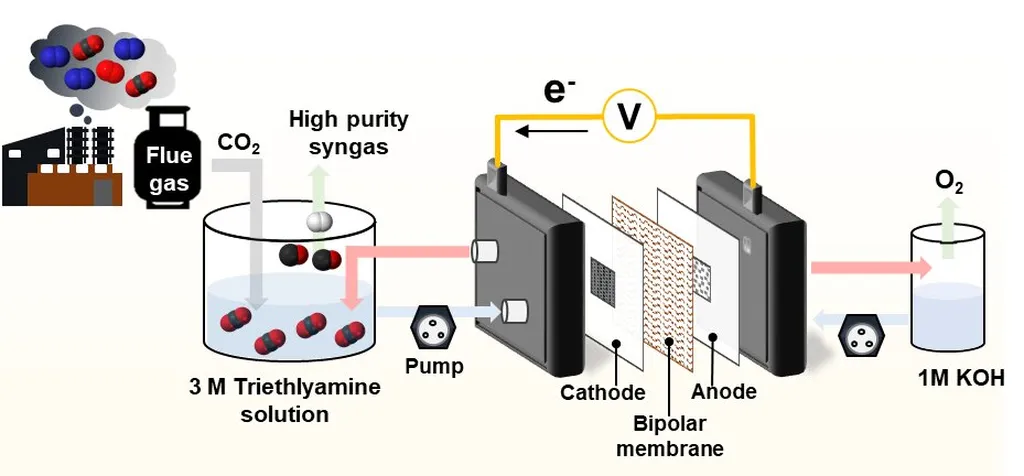In the quest to make carbon capture technologies more economically viable, a team of researchers led by Ye-Sub Son from the Korea Institute of Energy Research (KIER) and Yonsei University has made a significant stride. Their study, published in the journal “Carbon Capture Science and Technology,” focuses on developing a novel solvent blend that could reduce the energy required for CO2 capture, a major hurdle in the widespread adoption of amine-based capture processes.
The team investigated blends of piperazine (PZ) and 3-dimethylamino-1-propanol (3DMA1P), aiming to create an energy-efficient absorbent for CO2 capture. “The key to making carbon capture technologies more viable lies in reducing the energy required for solvent regeneration,” Son explained. “Our study focuses on developing solvents that not only reduce CO2 capture costs but also maintain or even enhance process performance.”
The researchers relied on rigorous modeling, supported by experimental data, to evaluate the potential of PZ-3DMA1P blends. They examined various operating parameters, including absorber and stripper temperatures, CO2 partial pressure, stripper total pressure, CO2 recovery, amine blending ratio, and water concentration. The results were compared with those of monoethanolamine (MEA) and CESAR-1, benchmark solvents in the industry.
The findings are promising. The PZ-3DMA1P blends exhibited higher CO2 absorption capacity and lower regeneration energy compared to MEA and CESAR-1. This could translate to significant cost savings and improved efficiency in industrial applications.
The study also conducted a comprehensive parametric analysis of regeneration energy, enhancing the applicability of the results across a diverse range of industries. “Our research provides a robust framework for evaluating and optimizing solvent blends for CO2 capture,” Son noted. “This could pave the way for more energy-efficient and cost-effective carbon capture technologies.”
The implications of this research are far-reaching. As the energy sector grapples with the need to reduce carbon emissions, technologies that can capture CO2 efficiently and economically are in high demand. The PZ-3DMA1P blends developed by Son and his team could play a crucial role in this endeavor, potentially shaping the future of carbon capture technologies.
In the evolving landscape of energy and environmental sustainability, this research stands as a testament to the power of innovation and the potential of scientific discovery to drive meaningful change. As the world continues to seek solutions to the challenges posed by climate change, studies like this one offer hope and a path forward.

